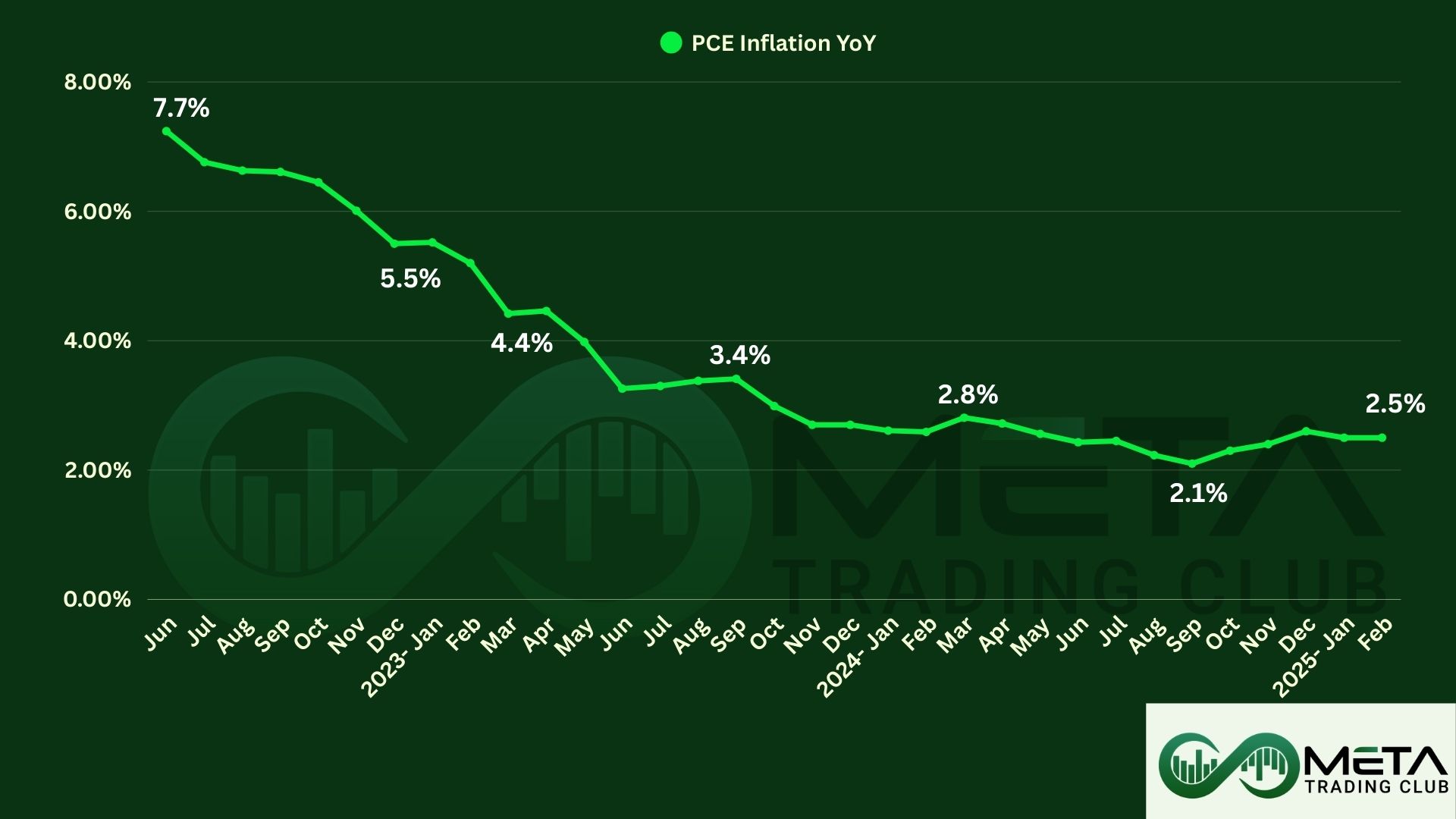Day trading has become an increasingly popular way for individuals to engage in the financial markets, offering the potential for significant profits within a single trading day. Unlike traditional investing, which focuses on long-term growth, day trading involves buying and selling financial instruments within the same day, capitalizing on small price movements. This fast-paced trading style requires a deep understanding of market dynamics, quick decision-making, and a solid strategy to succeed.
In this article, we will explore the essential rules and strategies that can help you navigate the complexities of day trading. Whether you’re a beginner looking to get started or an experienced trader seeking to refine your approach, these insights will provide you with the tools and knowledge needed to maximize your profits and minimize risks. Let’s uncover the secrets to successful day trading!
Table of Contents
What Is Day Trading?
Day trading is a fast-paced form of trading where traders buy and sell financial instruments within the same trading day. The primary goal is to profit from short-term price movements in assets such as stocks, options, futures, Forex, crypto currencies and other securities.
Unlike long-term investors, day traders focus on capturing immediate gains from market fluctuations rather than the fundamental value of the securities. This approach requires a deep understanding of market dynamics, technical analysis, and a high degree of self-discipline.
How Does Day Trading Work?
Day trading involves the rapid buying and selling of financial instruments within a single trading day, aiming to profit from short-term price movements. These are the key components of day trading and how they work.
- Market Selection: Day traders can trade various markets, including stocks, options, futures, currencies, and cryptocurrencies. The choice depends on the trader’s expertise and preference.
- Technical Analysis: Day traders rely heavily on technical analysis, using charts, indicators, and patterns to predict price movements. Common tools include moving averages and Relative Strength Index (RSI).
- Trading Strategies:
- Scalping: Involves making dozens or hundreds of trades in a day, aiming for small profits from each trade.
- Momentum Trading: Capitalizes on strong price movements in a particular direction.
- Breakout Trading: Focuses on entering trades when the price breaks through a significant support or resistance level.
- Risk Management: Effective risk management is vital for day trading. Day traders use stop-loss orders to limit potential losses and position sizing to manage risk exposure.
- Execution: Trades are executed quickly using high-speed internet and trading platforms. Day traders often use direct market access (DMA) brokers for faster execution.
- Closing Positions: All positions are closed before the market closes to avoid overnight risks and margin interest fees.
Example
Let’s walk through a simple example of day trading:
Imagine you are a day trader focusing on a popular tech stock, Nvidia (NVDA). The stock opens at $100 per share in the morning. Based on your analysis, you believe the stock will rise due to positive news about the company’s latest product launch.
- Market Opening: At 9:30 AM, the market opens, and you buy 100 shares of NVDA at $100 each, purchasing a total of $10,000.
- Monitoring the Market: Throughout the morning, you closely monitor the stock’s price movements using real-time data and technical analysis tools. You notice the stock price starts to climb.
- Price Increase: By 11:00 AM, the stock price has risen to $105 per share. You decide to sell your 100 shares to lock in your profit.
- Selling the Shares: You sell all 100 shares at $105 each, receiving $10,500 in total.
- Calculating Profit: Your profit from this trade is the difference between your selling price and buying price, multiplied by the number of shares: (105−100) × 100 = $500.
Skills Required to be a Day Trader
Day trading requires a unique set of skills and traits to navigate the fast-paced and often volatile financial markets. Some essential skills needed to be a successful day trader:
- Analytical Skills: Day traders must be able to analyze large amounts of data quickly and accurately. This includes understanding technical charts, indicators, and patterns to make informed trading decisions.
- Discipline: This is crucial in day trading. Traders need to stick to their trading plans and strategies without letting emotions influence their decisions. This helps in maintaining consistency and avoiding impulsive trades.
- Risk Management: Effective risk management is essential to protect capital. Day traders must know how to set stop-loss orders, manage position sizes, and diversify their trades to minimize potential losses.
- Patience: This is important to wait for the right trading opportunities. Rushing into trades without proper analysis can lead to losses. Successful day traders wait for setups that align with their strategies.
- Adaptability: Markets can change rapidly, and day traders need to adapt to new conditions quickly. This includes adjusting strategies based on market trends and news events.
- Technical Proficiency: Day traders rely on technology for research, analysis, and executing trades. Proficiency with trading platforms, charting software, and other tools is essential.
- Emotional Control: The ability to manage emotions like fear and greed is critical. Emotional control helps traders stay focused and make rational decisions, even during volatile market conditions.
- Persistence: This is the key to overcoming setbacks and continuing to improve. Day traders often face challenging days, and the ability to stay motivated and learn from mistakes is vital.
- Financial Knowledge: A thorough understanding of financial markets, securities, and trading regulations is necessary. This knowledge helps traders make informed decisions and stay compliant with trading rules.
Popular Day Trading Strategies
Here are some popular day trading strategies that traders often use to capitalize on short-term market movements:
1- Momentum Trading
Momentum trading involves buying stocks that are moving strongly in one direction on high volume and selling them before the momentum fades.
Also, the key for this type of trading is to enter trades when the momentum is strong and exit before it reverses. However, momentum traders use various technical indicators to gauge the strength and direction of trends:
- Moving Average Convergence Divergence (MACD): Uses moving averages to identify changes in momentum, direction, and strength of a trend.
- Relative Strength Index (RSI): Measures the speed and change of price movements to identify overbought or oversold conditions.
- Stochastic Oscillator: Compares a particular closing price of a security to a range of its prices over a certain period, helping to identify potential reversals.
Example
One common momentum strategy is the Moving Average Crossover. Suppose you want to momentum trade Nvidia:
Setup: Use a short-term moving average (like 10-period) and a longer-term moving average (like 50-period).
Entry: Enter a trade when the short-term moving average crosses above the longer-term moving average for buy signal. Remember to use RSI for confirmation.
Exit: Exit the trade when the short-term moving average crosses back or when a predetermined profit target is reached.
2- Scalping
Scalping is a strategy where traders make dozens or even hundreds of trades in a single day, aiming to profit from small price changes. This strategy requires quick decision-making and a high-speed trading platform. Scalpers look for very small price gaps created by order flows or spreads and exploit these tiny price movements.
Scalping typically involves very short time frames, ranging from a few seconds to a few minutes. Traders often use 1-minute or 5-minute charts to identify trading opportunities.
3- Breakout Trading
Breakout trading focuses on entering trades when the price breaks through a significant support or resistance level. Traders look for increased volume and volatility to confirm the breakout and aim to ride the trend until it shows signs of reversing. This strategy can be particularly effective in markets that are trending strongly.
Breakout trading is a strategy that involves entering a trade when the price breaks through a significant support or resistance level. Types of breakouts:
- Bullish Breakout: Occurs when the price breaks above a resistance level, indicating potential for further upward movement. Resistance level is a price level where an uptrend can be expected to pause due to a concentration of supply.
- Bearish Breakout: Occurs when the price breaks below a support level, indicating potential for further downward movement. Support level is a price level where a downtrend can be expected to pause due to a concentration of demand.
Trade with Breakout:
- Entry: Enter a trade when the price breaks through the identified support or resistance level. Some traders wait for a retest of the breakout level to confirm the breakout.
- Exit: Set a profit target based on the distance between the support and resistance levels (measured as the height of the previous range). Use stop-loss orders to limit potential losses if the breakout fails.
Confirmation:
Volume is a crucial factor in breakout trading. A breakout accompanied by high volume is more likely to be genuine and sustainable. Low volume breakouts are often false signals. Also, you can use these indicators for confirming breakouts:
- Moving Averages: Can be used to confirm the direction of the breakout.
- Volume Indicators: Such as the On-Balance Volume (OBV) or Volume Weighted Average Price (VWAP), help confirm the strength of the breakout.
Example
Look for a period where the price is moving within a defined range, with clear support and resistance levels. For example, you see a resistance in Nvidia share.
- Wait for the Breakout: Monitor the price action and wait for a breakout above resistance.
- Confirm with Volume: Ensure the breakout is accompanied by a significant increase in volume. (Confirmation checked)
- Enter the Trade: Enter a long position on a bullish breakout (Buy the share).
- Set Stop-Loss and Take-Profit Levels: Place a stop-loss order just below the breakout level (for bullish). Set a take-profit target based on the height of the previous range.
Breakout trading can be highly effective, but it requires patience and discipline to wait for the right setups and confirm the breakout with volume.
4- Range Trading
Range trading involves buying at the lower end of a defined price range (support) and selling at the upper end (resistance). This strategy works best in markets that are not trending strongly in one direction. Traders use technical indicators like RSI to identify overbought and oversold conditions within the range.
Range trading works best in markets that are not trending strongly in either direction. It’s important to identify a clear range and avoid trading in markets with high volatility or strong trends. Also, range trading is a strategy that involves identifying and trading within a price range, where the price oscillates between a defined support and resistance level.
- Buy at Support: Enter a long position when the price approaches the support level, anticipating a bounce back up.
- Sell at Resistance: Enter a short position when the price approaches the resistance level, anticipating a pullback down.
- Exit: Close the long position near the resistance level and the short position near the support level.
Example
Look for a period where the price is moving within a defined range with clear support and resistance levels. For example, you see a trading range in Tesla shares.
Buy at Support: Enter a long position when the price approaches the support level, using indicators like RSI to confirm oversold conditions.
Set Stop-Loss and Take-Profit Levels: Place stop-loss orders just below the support level for long positions and above the resistance level for short positions. Set take-profit targets near the opposite boundary of the range.
5- News Trading
News trading capitalizes on market volatility following significant news events. Traders quickly react to news releases, such as earnings reports or economic data, to take advantage of the resulting price movements. This strategy requires staying updated with news and having the ability to execute trades swiftly.
6- Contrarian trading
Contrarian trading strategies involve going against prevailing market trends to capitalize on market inefficiencies created by herd behavior. This trading is based on the principle of buying when others are selling and selling when others are buying. The idea is that markets are often driven by fear and greed, leading to overreactions that create opportunities for contrarian traders.
Contrarian traders analyze market sentiment to identify when the majority of traders are overly bullish or bearish. They believe that extreme sentiment often precedes a market reversal. This strategy involves identifying potential reversal points in the market. Traders look for signs that a trend is about to reverse, such as:
- Buying Distressed Stocks: Contrarian traders often target stocks that have been beaten down due to negative news or poor earnings reports. They believe these stocks are below their intrinsic value (undervalued) and will rebound once the market sentiment improves and the market will eventually recognize their true value.
- Shorting Overvalued Stocks: When a stock is overhyped and trading at inflated prices, contrarian traders may short it, betting that the price will fall once the hype subsides.
Contrarian Indicators:
Traders use various indicators to gauge market sentiment, such as the Volatility Index (VIX), put/call ratios, and investor sentiment surveys. These indicators help identify when the market is overly optimistic or pessimistic.
Contrarian trading requires patience and discipline, as it may take time for the market to correct itself. Traders must be willing to hold their positions until the market sentiment shifts.
Example
Imagine where a popular tech stock, Nvidia, has been rising for a long time, and the market sentiment is extremely positive. A contrarian trader, believing that the market has overreacted and anticipating a correction in price. So, he is waiting for a signal in the overbought area to sell the stock.
7- Pullback Trading
Pullback trading involves entering a trade during a temporary price retracement within a larger trend. Traders look for a brief reversal in the trend to enter at a better price before the trend resumes. This strategy often uses Fibonacci retracement levels and moving averages to identify potential entry points.
Pullback trading is a strategy that involves entering a trade during a temporary price dip within an overall trend, aiming to profit from the continuation of the trend.
Use trend indicators like moving averages or trendlines to confirm the direction of the trend.
A pullback is a temporary reversal in the direction of the prevailing trend. In an uptrend (series of higher highs and higher lows), it’s a short-term decline. Also, in a downtrend, (series of lower highs and lower lows) it’s a short-term rise.
- In an uptrend enter a long position when the price pulls back to a support level, such as a moving average or a previous resistance level that has turned into support.
- In a downtrend enter a short position when the price pulls back to a resistance level, such as a moving average or a previous support level that has turned into resistance.
Set profit targets based on the distance of the pullback or the next significant resistance or support level. Also, you can use trailing stops to lock in profits as the price moves in your favor.
Example
For example you are seeing Meta has a resistance that has been broken. Also, you want to buy the share.
Wait for the Pullback: Monitor the price action and wait for a pullback to a key resistance level.
Confirm with Indicators: Use indicators like RSI or Fibonacci retracement to confirm the pullback.
Enter the Trade: Enter a long position in an uptrend at the identified support or resistance level.
Set Stop-Loss and Take-Profit Levels: Place stop-loss orders just below the support level for long positions and above the resistance level for short positions. Set take-profit targets based on the next significant resistance or support level.
These strategies can be effective when used correctly, but they also come with risks. It’s essential to thoroughly understand each strategy and practice disciplined risk management. If you want to boost your day trading skills and gain regular profit from trading, participate in our incubator program.
Advantages of Day Trading
Day trading offers several advantages that make it an appealing option for many traders. Here are some key benefits:
- Potential for Quick Profits
Day trading allows traders to capitalize on short-term price movements, potentially generating profits within a single trading day. This can be particularly appealing for those looking to make quick returns on their investments. - No Overnight Risk
Since day traders close all their positions before the market closes, they avoid the risks associated with holding positions overnight. This eliminates the uncertainty of after-hours market movements and news events that could impact the value of their holdings. - High Liquidity and Volatility
Day trading typically involves highly liquid and volatile markets, providing opportunities to enter and exit trades quickly. This liquidity ensures that traders can execute their trades at desired prices without significant slippage. - Flexibility and Independence
Day traders have the flexibility to work from anywhere with an internet connection. This independence allows them to set their own schedules and trade at their convenience, making it an appealing career choice for those seeking autonomy. - Learning Opportunities
Engaging in day trading provides continuous learning opportunities as traders analyze market trends, develop strategies, and adapt to various market conditions. This constant learning can enhance their trading skills and market understanding. - Leverage
Day traders often use leverage to amplify their trading positions. This means they can control larger positions with a smaller amount of capital, potentially increasing their returns. However, it’s important to manage leverage carefully to avoid significant losses. - Excitement and Engagement
Day trading offers a level of excitement and engagement that long-term investing may lack. The fast-paced nature of day trading can be thrilling for those who enjoy making quick decisions and actively managing their investments.
Disadvantages of Day Trading
Day trading, while potentially lucrative, comes with several significant disadvantages that traders should be aware of these disadvantages highlight the challenges and risks associated with day trading:
- High Risk of Losses
Day trading involves a high level of risk due to the volatile nature of financial markets. The potential for quick and substantial losses is ever-present, especially for inexperienced traders. Emotional decision-making, lack of proper strategies, or unexpected market events can lead to significant financial setbacks. - High Costs
Frequent trading incurs substantial costs, including commissions, fees, and slippage. These costs can quickly add up and eat into profits, making it challenging to achieve consistent gains. - Time-Consuming
Day trading requires a significant time commitment. Traders need to spend several hours each day monitoring the markets, analyzing data, and executing trades. This can be difficult to manage, especially for those with full-time jobs or other commitments. - Emotional Stress
The fast-paced nature of day trading can lead to high levels of stress and emotional strain3. The pressure to make quick decisions and the potential for significant financial loss can be overwhelming, leading to burnout and poor mental health. - Limited Participation in Long-Term Gains
Day traders do not benefit from the long-term upward trend of most financial assets. By focusing on short-term movements, they miss out on the compounding growth that long-term investors enjoy. - High Failure Rate
The majority of day traders do not succeed. It’s estimated that around 95% of day traders ultimately lose money. This high failure rate underscores the difficulty of consistently making profitable trades in the short term. - Overtrading
Beginners often fall into the trap of overtrading, which significantly raises trading costs and can reduce gains or amplify losses. Overtrading can also lead to poor decision-making and increased risk exposure.
Final Word
Day trading is not for the faint-hearted. It requires dedication, continuous learning, and a disciplined approach. While the potential for profit is significant, so are the risks. By adhering to the essential rules and strategies outlined in this article, you can enhance your chances of success and navigate the volatile waters of day trading with confidence.
Day trading offers a unique opportunity to capitalize on short-term market movements. Whether you’re just starting or looking to refine your skills, understanding the key principles and strategies is crucial. Remember to stay informed, manage your risks effectively, and maintain a disciplined trading routine. With the right mindset and tools, you can achieve your financial goals.
FAQs
Day trading involves buying and selling securities within the same trading day to profit from short-term price movements. Day traders use technical analysis and momentum trading to capitalize on market fluctuations.
Day trading can be highly risky and is not suitable for everyone. While it offers the potential for quick profits, it requires significant time, skill, and discipline.
The income of a day trader varies widely. On average, day traders can earn between $39,000 and $300,000 annually, with an average of around $96,000 per year. Also, many factors like experience, strategy, and market conditions impact earnings.
No, day trading is not illegal. It is a legitimate trading strategy used by traders. Also, it is highly regulated and requires adherence to specific rules.
Day trading is very fast-paced. Trades can last from a few seconds to several hours, but all positions are closed by the end of the trading day. This requires quick decision-making and constant monitoring of the markets.



















